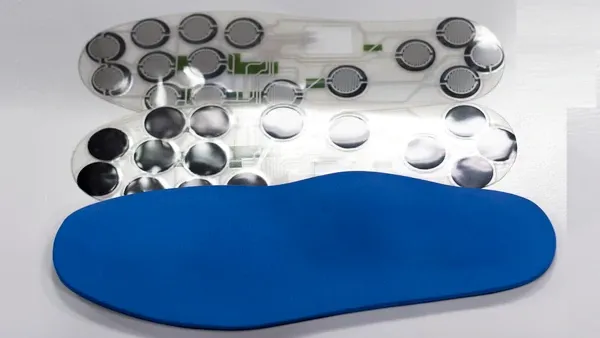It is a project devised by a group of young Argentines, who plan to market it in 2020.
They are millennials, are between 24 and 28 years old, and share a project.It all started when Facundo Noya (25), in 2016, was in a hospital in Concordia, Entre Ríos.His father was admitted and shared a room with a diabetic patient who had entered by an injury to one of his feet.He had a bug for several days and had not noticed.
The woman had to amputate the lower limb.And Noya, biomedical engineer, became sensitized to this problem, known among people with diabetes, and decided to do something.He wondered how such a simple injury could end in an amputation and what could he do to avoid it.
Thus was born the idea of Ebers, a template with 15 sensors (initially there were 21) that can measure variables in the person with diabetes, detecting possible injuries.It is a way of preventing an amputation.
how it works
The template works through resistive sensors with silver nanoparticles, which measure temperature, humidity and pressure.When detecting an anomaly, send a notification to the smartphone or other device with a certain app installed.
"He warns the patient that something is walking badly with his foot, in the footprint, and can also be synchronized with the cloud, and that data passes them to the doctor, who is following the case of that patient," said Bernardo Villares, industrial designer, industrial designer,who is part of the Ebers team.
"The application stores the data, and takes a record over time, of the footprint, of the normal pattern of the person suffering from diabetes," he added.
The young man explained that the technology used for the development of the template sensors is not new."But the application is quite novel, especially for the materials. The advent of Nanomaterials has given us some advantages, especially in conductivity, in the arrest of the sensors," he said.
The template continuously monitors the patient's march, and if it detects an anomaly, it reports it.It synchronizes with a platform, so that the doctor can follow the pathology.
when it will be marketed
"Like any medical product, development is long. We planItalian hospital team and Rawson, in Córdoba, "Villares said.
As expressed by the product, USD 60 "plus a monthly subscription of USD12, to have access to the platform, and the application."
And he emphasized: "The most important thing is the application, which connects with the template, the application is the one that sails between the algorithms and detects the risk. In turn, it is the platform that stores all that information and makes all availableThat information to the medical team. "
project based on competitions
The Noyaya project, founder and director of Ebers, grew and added to Florencia Capricio (team coordinator), Villares (product development), Camila Ruiz (Development), Fabián de Vita (Development), Juan José Ortiz (Development) andLeandro Egea (algorithms), among others.In addition, it has the support of the Argentine Nanotechnology Foundation (FAN).
Ebers took strong impulse, since its financing, based on the participation in the Potentiate Contest, carried out by the Government of the City of Buenos Aires."It was last year that we enrolled and won it, we linked to Mariano Mayer (National Secretary of Entrepreneurs and SMEs) and with Mauricio Macri," Villares recalled.
He also explained that his entrepreneurship isFinanced, to a large extent, through competitions: "One of the ideas that prevails at this stage is to finance the entrepreneurship with competitions to cross this first part of development autonomously. We are finalists of Samsung Innova and a History Channel contest, where the public has to vote. "
The latter is a contest that selected, among more than eight thousand projects throughout Latin America, 10 finalists."Our project was among them. Now we are participating in a vote that takes place every 24 hours, and would allow us to gain funds that would allow the technical tests we need to be able to launch the workforce to the market," Villares said.
new technologies
There are wearables (dress technologies), IoT devices (internet of things) and other smart gadgets that serve to monitor blood glucose and other variables in a patient.
"New technologies allow the diabetic person and their environment to have control. There are many devices lines. There are insulin infuses and new insulins, very good. Only between 1 and 4% of diabetic people, globally, globally, globally,They use infusors, "said the doctor.
He also highlighted one of the latest technologies that many people already use in the world, avoiding the classic puncture on the finger.They are patches with Bluetooth technology and apply for 15 days to measure glucose levels and general status of the patient, according to the solution.
A new technique discovered by researchers at the University of Bath, and published in Nature Nanotechnology magazine consists of a patch applicable to some part of the body, such as the wrist.It has graphene sensors that they capture with a small electric shock (electrosmosis), the glucose of the underground interstitial fluid.It allows to control glucose levels for six hours with intervals of 10 to 15 minutes, and avoid punctures.
In Argentina, the free freestyle device is marketed for glucose control, also without punctures.The system has a sensor that is applied on the back of the arm and lasts up to 14 days, and a reader to scan the sensor.
Currently this system is not found in the National Diabetes Law, but from the company that develops the product, Abbott, they expressed that they are working to make this solution included.


